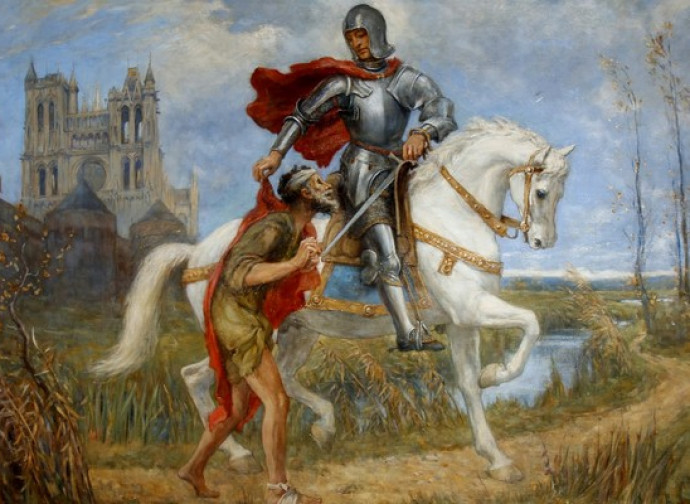Saint Martin of Tours
He is one of the founders of monasticism in Europe, to whose evangelisation he admirably contributed

Many people know the episode of the cloak, but few are aware of the extraordinary mark left by St Martin of Tours (316-397) on the history of the Church. Not by chance called “the Apostle to the Gauls”, the saint is one of the founders of monasticism in Europe, to whose evangelisation he admirably contributed. He spread the word and love of Christ for all men and fought both Aryan heresy and paganism.
Native of Pannonia, in the territory of present-day Hungary, he himself had grown up in a pagan family: his father, a military tribune, had named him Martin in honour of the god Mars. His first conversion matured thanks to the encounter with a Christian family, which won him over because of the way they lived. He began his catechumenate, but at the age of 15 he was forced by an imperial edict to enlist in the army. It was during a night patrol, in the winter of 335, that the famous meeting with the beggar took place. Martin gave him half his cloak, cutting it in half with his sword. The following night Jesus appeared to him in a dream, surrounded by angels. He heard Jesus say, “Here is Martin, the Roman soldier who is not baptized. He has clothed me”. When he woke up, he found himself with his cloak miraculously whole and shortly afterwards he was baptised. The last pivotal point was when he was discharged from the army, which took place when he was about forty.
In the second phase of his life, Martin committed himself to the fight against Arianism, which was very widespread at that time, despite having already been condemned by the Council of Nicaea in 325. He had found a safe guide in Bishop Hilary of Poitiers, exiled to Phrygia for some years because of the malice of the Arians who had asked Emperor Constantius II to intervene against him. And Martin also suffered persecution for his defence of orthodoxy. He, already dedicated to the hermit life, went to Hilary - on his return from exile - in Poitiers. He was ordained an exorcist (i.e. one of the ancient minor orders) and for about ten years he retired to the nearby Ligugé, where he founded one of the very first European monasteries. He led a community life with his disciples, consisting in prayers and mortifications.
In 371 his fame of holiness was such that the Christians of Tours resorted to a stratagem to have him as bishop (they invited him to assist a sick woman and then brought him before the community that acclaimed him). In the end, without abandoning the ascetic life, he accepted and exercised the episcopal ministry with great solicitude. He baptised, freed the possessed, worked miracles, preached and cared everywhere for the sick, the poor and prisoners, assisting them in the needs of body and soul. As Sulpicius Severus (c. 360-420), one of his disciples, wrote: “He who everyone already considered holy was thus also considered a powerful man and truly worthy of the Apostles”.
In Tours he founded another monastery, later known as Marmoutier, in which he prepared the religious for mission. In fact, Martin took care to evangelise the countryside. He had the temples and pagan idols torn down. He defended the weakest without fear of facing the powerful. When he realized that he was about to die, he lay down on a table covered in ashes and waited in prayer for his return to the Father's house, already surrounded by a cult that soon spread throughout Europe.
Patron of: France, Hungary, Papal Swiss Guard; beggars, soldiers, vine-growers




